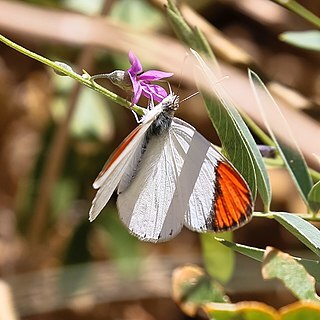A herb. It can grow each year from seed or keep growing for a few years. It grows 1 m high. The leaves are made up of 2-5 pairs of leaflets along the stalk. The leaflets are 3-9 cm long by 2-8 mm wide. The flowers are lilac coloured. They are in groups. The fruit are small yellowish-green pods. These are 15-30 mm long by 3-4 mm wide. They have a small beak. They contain 3-5 seeds.
Erect, slender subshrub, up to 0.3 m tall, branching from base, with white appressed hairs. Leaves pinnately 5-9-foliolate, leaflets linear-lanceolate, glabrous above. Flowers in lax terminal racemes, very small, yellow, purple-tipped. Pod oblong, slightly sickle-shaped, pale yellow-green.
Calyx 1.5–2.5(3) mm long, appressed-pubescent with greyish hairs; lateral teeth much shorter than to about equalling the tube, upper teeth joined for about half their length.
Stems 10–60 cm high, often becoming woody at the base, with sparse to sometimes moderately dense, appressed or rarely ascending hairs.
Seeds (1)2–6, c.3.5 × 2.5 × 1 mm, subreniform-oblong, conspicuously flattened, light brown, the aril scarcely developed.
Pods (15)20–25(30) × (3.5)4(4.5) mm, boat-shaped, closely appressed-pubescent, light creamy-brown to straw-coloured.
Flowers in terminal racemes up to 35 cm long; bracts 1–2 × 0.3 mm, subulate; pedicels 2–7(10) mm long, very slender.
Petals 5–6 mm long, purple to blue or pink, very rarely described as yellow.
Annual with a long slender taproot to perennial with a woody stock.
Ovary pubescent; style glabrous, with pencillate tip.
Stamen tube joined above.

